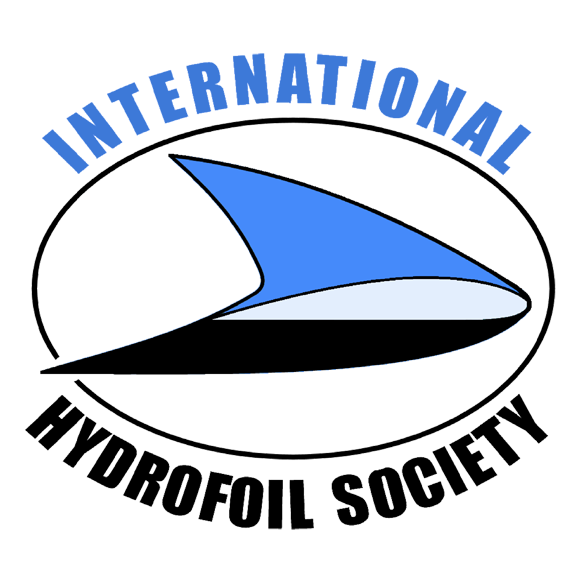[vc_row][vc_column][vc_column_text]
Hydrofoil educational Information In Technical Journals, Papers, and Books
(Mostly, But Not Entirely, Limited to Engine Powered Vessels)
Click on the links below for summary:
- Terminology
- Hydrofoil Basics – A Brief Tutorial
- Hydrofoil Ship Design
- Development of Dinghy Foilers – by Ian Ward
- Ships That Fly
- Quest for Speed at Sea
- “A Configuration of a Stepped Planing Boat Having Minimum Drag (Dynaplane Boat)“
- “Development of the Tool for Predicting Hydrofoil System Performance and Simulating Motion of Hydrofoil-Assisted Boats“
Last Update January 15, 2006
Note: Recently added items are at the bottom of the list!
- Glossary of Hydrofoil Terminology (9 May 03)
- Hydrofoil Basics – A Brief Tutorial (11 Nov 00)
- Hydrofoil Ship Design – by William C. O’Neill, editing by William Ellsworth (20 Dec 04) This Hydrofoil Design paper by two of the worlds most senior and experienced Hydrofoil experts, concentrates on sizing and design of a foil system including mechanical subsystems to meet certain specified requirements. It also discusses a simple way of designing the first version of the control system algorithm, which was very successful on the Foilcat.
- Development of Dinghy Foilers – by Ian Ward (10 Oct 04)
- Ships That Fly, by Meyers, John. About 10 years ago John collected a lot of material about hydrofoils and put it all together in a book called Ships That Fly. It became a story of the modern hydrofoil covering the early days of hydrofoil inventors and experimenters and taking the reader through over 150 pictures and illustrations of hydrofoils leading to those of recent years. He recently had the pages of the book scanned and put in a pdf file and placed on a CD that is being offered for sale.You will note that Chapter 6, The US Navy Fleet Hydrofoil-PHM, ends with a very optimistic view of PHMs in the current US Navy, and larger hydrofoils in its future. However, this was not to be. Several years following the completion of my book, Ships That Fly, there were events surrounding the US Navy PHM program that are described in an Addendum to Chapter 6. All six PHM ships were decommissioned on July 30, 1993. This was the only time the US Navy has decommissioned an entire class of ships on the same day. This addendum describes some of the events leading to this sad day for the US Navy and the hydrofoil community. Also, documented are the many attempts to save the Ship, the day of the ceremony, attempts to save the ships even after the decommissioning, and finally the subsequent disposal of the ships and their status today.John also collected a series of over 140 hydrofoil pictures and illustrations, and created a Hydrofoil Slide Show, entitled: A Century of Hydrofoil Development.All three of these files are on the CD. To find out more, log onto: http://themeyers.org/ShipsThatFly/index.htmlBest regards, John Meyer jr8meyer@comcast.net
 Quest for Speed at Sea – by Dennis J. Clark,William M. Ellsworth, and John R. Meyer from Naval Surface Warfare Center Technical Digest of April 2004. This new paper by senior IHS members, highlights the past, present, and future of the quest for speed at sea. It outlines the development of technologies and concepts to increase the speed of naval vehicles. Although commercial applications of high-speed marine craft flourish, the focus here is on high speed in naval missions. A historical context details significant attempts to increase ship speed, highlighting Carderock Division’s many contributions. The primary focus is after World War II, when the U.S. Navy began to seriously consider the value of proposed concepts for planing craft, multihulls, hydrofoils, hovercraft, and hybrids. A discussion of current high-speed ship technologies follows, with an overview of limits and advantages, plus a review of operational experience. Costs of development, acquisition, and operations are weighed, followed by a summary of high-speed naval vehicles’ potential. (15 Nov 04)
Quest for Speed at Sea – by Dennis J. Clark,William M. Ellsworth, and John R. Meyer from Naval Surface Warfare Center Technical Digest of April 2004. This new paper by senior IHS members, highlights the past, present, and future of the quest for speed at sea. It outlines the development of technologies and concepts to increase the speed of naval vehicles. Although commercial applications of high-speed marine craft flourish, the focus here is on high speed in naval missions. A historical context details significant attempts to increase ship speed, highlighting Carderock Division’s many contributions. The primary focus is after World War II, when the U.S. Navy began to seriously consider the value of proposed concepts for planing craft, multihulls, hydrofoils, hovercraft, and hybrids. A discussion of current high-speed ship technologies follows, with an overview of limits and advantages, plus a review of operational experience. Costs of development, acquisition, and operations are weighed, followed by a summary of high-speed naval vehicles’ potential. (15 Nov 04)- Design Paper on “A Configuration of a Stepped Planing Boat Having Minimum Drag (Dynaplane Boat)” by Eugene P. Clement. This is an excellent historic design paper on stepped hull hydroplanes with lots of solid design data. (11 Nov 05)
- “Development of the Tool for Predicting Hydrofoil System Performance and Simulating Motion of Hydrofoil-Assisted Boats” by Dr. Konstantin Matveev and Ralph Duncan presented at the July 2005 ASNE symposium on High Speed / High Performance Ships and Craft. These equations can be used for initial optimizing of complex hydrofoil configurations and for developing hydrofoil control systems. Steady and unsteady forces on hydrofoil system elements are represented in the general form suggested by fundamental hydrodynamic theories. Empirical corrections account for viscosity and other effects. Interactions between hydrofoil systems are included. The motion simulator can predict stability and maneuverability of hydrofoil-assisted boats and their motions in waves. (16 Jan 04)
[/vc_column_text][/vc_column][/vc_row]


